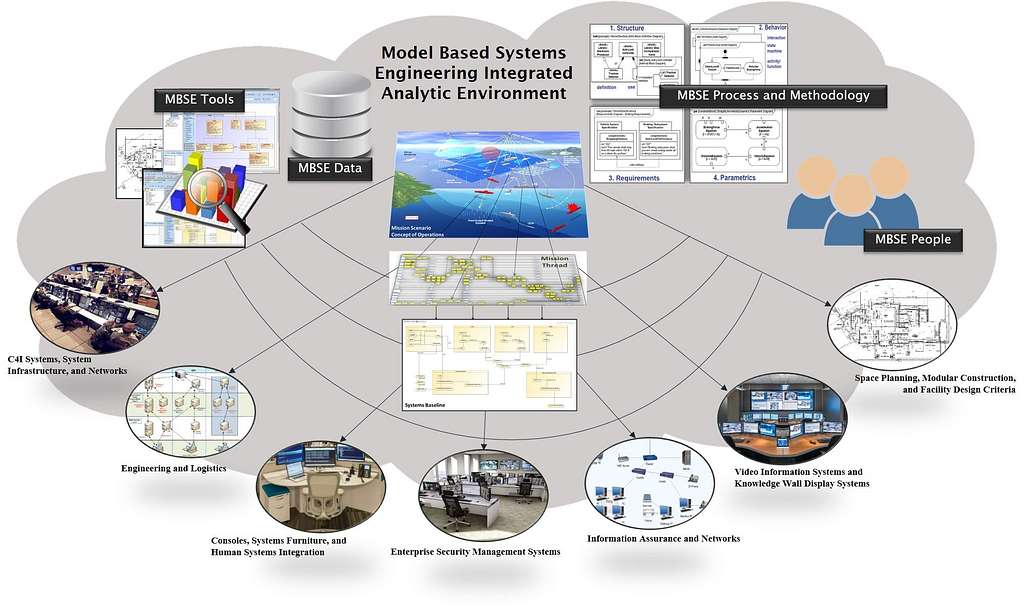In the vast world of software development, the art of testing holds unparalleled importance. As the gatekeepers of quality, software testers have the ability to unveil even the smallest glitches hidden beneath complex codes. But mastering this craft requires a keen eye, a curious mind, and most importantly, the right tools to sharpen one’s skills. In this article, we delve into the realm of online gems – the shining beacons that can transform aspiring software testers into virtuosos of their trade. Join us on this exhilarating journey as we explore the top four online resources that will unlock the secrets of software testing and set you on the path towards mastery. Get ready to test the limits of your knowledge and unleash your full potential!
1. Unleashing the Potential: Harnessing the Power of Automated Testing Tools
In today’s rapidly evolving tech landscape, businesses and organizations are constantly striving to stay ahead of the game. One of the most effective ways to ensure software quality, seamless functionality, and faster time to market is through automated testing tools. These powerful tools have revolutionized the way software testing is conducted, helping businesses unleash their full potential.
Automated testing tools offer a multitude of benefits that significantly enhance the efficiency and effectiveness of the testing process. By automating repetitive tasks and reducing manual efforts, these tools not only save valuable time but also improve accuracy and reliability. With the ability to run tests round the clock, businesses can speed up their development cycles and respond quickly to market demands. Moreover, automated testing tools provide comprehensive test coverage, detecting bugs and issues that are often overlooked in manual testing. This ensures robust software performance and enhances customer satisfaction. Harnessing the power of these tools enables businesses to optimize their testing resources, streamline workflows, and elevate the overall quality of their software products.

2. Navigating the Testing Maze: A Guide to Robust Test Management Systems
In today’s rapidly evolving technological landscape, the importance of implementing a solid test management system cannot be overstated. As organizations strive to release high-quality software products, it is crucial to navigate the intricate testing maze with confidence. To assist you on this journey, we present a comprehensive guide that sheds light on the key elements of robust test management systems.
1. Efficient Test Planning: A well-designed test management system enables efficient test planning by allowing you to create test strategies and define test objectives. It provides a platform to identify the scope of testing, establish timelines, allocate resources, and set realistic milestones.
2. Streamlined Test Execution: A reliable test management system facilitates the smooth execution of tests by centrally storing test cases and ensuring seamless collaboration between testers. It offers features like test scheduling, reporting, and progress tracking, allowing teams to efficiently track and document test results.
3. Effective Defect Management: An integral aspect of any robust test management system is its ability to handle defects effectively. From capturing and prioritizing defects to assigning them to the relevant stakeholders, a good system ensures that defects are tracked, resolved, and retested in a timely manner.

3. Test, Analyze, Repeat: Exploring the Boundless Features of Dynamic Test Case Generators
Dynamic test case generators are powerful tools that have the potential to uncover hidden bugs and optimize software performance. They offer developers and testers the ability to create an infinite variety of test cases, ensuring comprehensive coverage and improved software reliability.
One of the key advantages of dynamic test case generators is the ability to automatically adapt to changing requirements and test objectives. By continually analyzing the software under test and its behavior, these generators generate test cases that are specifically tailored to uncover the most critical defects. This iterative approach allows for constant improvement and refinement of the testing process, leading to higher quality software.
In addition, dynamic test case generators provide a range of features that enhance the testing experience. These include the ability to generate test data based on specific input constraints, ensuring thorough validation and examination of edge cases. The generators also allow for the generation of test cases with unpredictable or random elements, mimicking real-world scenarios and increasing the likelihood of detecting rare and hard-to-find bugs. Moreover, with the ability to quickly generate large volumes of test cases, these tools enable efficient stress testing, helping developers identify performance bottlenecks and optimize resource allocation.
Harnessing the boundless features of dynamic test case generators empowers software development teams to continuously refine their testing approach and ensure the robustness and reliability of their products. As technology and user requirements evolve, these tools serve as invaluable assets that uncover elusive bugs, optimize software performance, and ultimately enhance the end-user experience. With the ability to adapt, analyze, and repeat, dynamic test case generators truly revolutionize the testing process, enabling developers to deliver high-quality software in an ever-changing technological landscape.
4. Unveiling the Secrets: Exploring the Benefits of Integrated Testing Environments
Unlocking the potential of integrated testing environments can revolutionize the way we navigate the intricate world of software development. With an integrated testing environment, teams can seamlessly combine multiple testing methodologies, tools, and frameworks, uncovering a new level of efficiency and effectiveness. By breaking down silos and promoting collaboration, these environments empower testers, developers, and stakeholders alike, delivering a range of benefits that go beyond the obvious.
One of the key advantages of integrated testing environments lies in their ability to streamline the testing process. By consolidating various testing tools and frameworks into a unified platform, efficiency is greatly enhanced. Testing teams can effortlessly switch between different testing approaches, seamlessly integrate automation scripts, and speed up the overall testing cycles. This streamlined workflow not only saves valuable time, but it also increases productivity and enables quicker time-to-market for software products.
The collaborative nature of integrated testing environments is another treasure trove waiting to be discovered. These environments foster a cohesive and cooperative culture, enabling effective communication across different teams involved in the testing process. Developers and testers can work hand-in-hand to identify and resolve issues early on, preventing costly delays later in the development cycle. The real-time collaboration features promote knowledge sharing, accelerating learning curves and ensuring that everyone is on the same page. With this unified approach, teams can deliver high-quality software while minimizing the risk of miscommunication and misinterpretation.
In conclusion, the benefits of integrated testing environments are far-reaching. From streamlining the testing process to fostering collaboration, these environments have the power to revolutionize software development practices. Embracing integrated testing environments opens up a world of opportunities where teams can work hand-in-hand, unlocking the secrets to achieving superior software quality, accelerated time-to-market, and enhanced efficiency.
In Retrospect
As we close the chapter on “Mastering the Craft: Top 4 Online Gems for Software Testing,” we hope this article has shed light on the powerful resources available to aspiring software testers in the virtual realm. These gems are the shining beacons that will guide you through the intricate and ever-evolving landscape of software testing.
From the practical and user-friendly platforms that offer hands-on experience, to the comprehensive courses that delve into the depths of testing methodologies and strategies, the online world has truly opened up a treasure trove of knowledge for software testers to explore.
As you embark on your journey to master the art of software testing, remember that these gems are not mere shortcuts, but rather the keys that will unlock the doors to your success. Every click, every lesson, and every interaction will contribute to your growth and sharpen your skills.
So, equip yourself with these resources, but don’t forget that practice and perseverance are the jewels in your own crown. Embrace every challenge, learn from every mistake, and let your passion for testing fuel your journey towards becoming a true master of the craft.
The online gems we have presented here are just the beginning. As technology continues to evolve, so will the world of software testing. So stay curious, stay adaptable, and stay hungry for knowledge, for it is your hunger that will keep you at the forefront of this ever-changing field.
Now, armed with these valuable insights, it’s time to embrace the digital realm and unleash your potential. May your path be paved with rich experiences, continuous learning, and ground-breaking discoveries.
Remember, the online world is yours to conquer. Go forth and master the craft of software testing!
Software testing is an indispensable part of the product development process that enables businesses and developers to identify, fix and remove issues that may arise in the development cycle of a software product. With the dawn of the internet, software testing has shifted to the digital realm, providing a wide range of online tools to help testers master their craft. Here are some of our picks for the top 4 online gems that will take your software testing to the next level:
1. TestRail: TestRail is a comprehensive test management system that empowers software testers to visualize their test results and form detailed reports. The platform provides custom dashboards, streamlined access to test scripts and requirements, and integrated defect tracking. TestRail’s helpful debugging capabilities and automated testing features make it a smooth transition for software testers who are new to the online realm.
2. Buglife: For testers who are looking for an intuitive platform to organize their software testing projects, Buglife is the perfect tool. It offers a UI-based bug tracking system, complete with customizable labels, automated reminders, and detailed visual reports. With Buglife, testers can easily keep track of all their projects, and identify bugs in no time.
3. Balsamiq: Balsamiq is a powerful mockup and wireframing tool. It enables testers to create perfect prototypes for desktop, mobile and web applications. Testers can collaborate with design teams to create projects as they go, while also ensuring the products meet all the guidelines and quality assurance criteria.
4. Hortonworks Sandbox: Last but not least, the Hortonworks Sandbox is a great tool for software testers who are looking to go beyond standard enterprise applications. It allows testers to deploy and test data analytics solutions, as well as applications on hadoop. Test environments are easy-to-create and can be put to use within minutes.
The online realm of software testing is growing every day, and these top 4 picks are only the beginning of an endless library of resources. With the help of these online gems, software testers will be able to maximize their opportunities and gain a better understanding of the craft.
